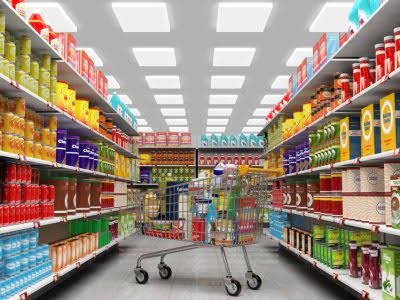
Overall, when it is difficult or not economically feasible to track the costs of a product individually, process costing is typically the best cost system to use. Why have three different cost calculation methods for process costing, and why use one version instead of another? The different calculations are required for different cost accounting needs. Alternatively, process costing that is based on standard costs is required for costing systems that use standard costs. In general, the simplest costing approach is the weighted average method, with FIFO costing being the most difficult.

Process costing vs job order costing
- The number of items that were started during the period, the number of items that were completed and transferred out, and the number of items that were incomplete at the end of the period have to be determined and recorded.
- Overall, when it is difficult or not economically feasible to track the costs of a product individually, process costing is typically the best cost system to use.
- Process costing is an accounting methodology that traces and accumulates direct costs, and allocates indirect costs of a manufacturing process.
- A process costing system accumulates the costs of a production process and assigns them to the products that the business outputs.
- For example, managers using this system can assess profit margin by product and isolate problem products before they become major issues.
- Overhead is assigned in a manner similar to what was just described for direct labor, where we estimate the average level of completion of all work-in-process units, and assign a standard amount of overhead based on that percentage.
Process Costing is the cost accounting method in which production overhead is equally allocated to each product due to their similarity and mass production. The company assumes that each product requires the same overhead cost. Moreover, raw material needs to pass through multiple stages of production before turning into finished goods. And it is very complicated to assign the overhead cost individual unit.
What is your current financial priority?
Costs are assigned to products, usually in a large batch, which might include an entire month’s production. Eventually, costs have to be allocated to individual units of product. It assigns average costs to each unit, and is the opposite extreme of Job costing which attempts to measure individual costs of production of each unit. It is a method of assigning costs to units of production in companies producing large quantities of homogeneous products. Process costing is a method of costing used mainly in manufacturing where units are continuously mass-produced through one or more processes. Examples of this include the manufacture of erasers, chemicals or processed food.In process costing it is the process that is costed (unlike job costing where each job is costed separately).
Calculating Unit Cost Under Process Costing
This makes it easy to switch over to a job costing system from a process costing one if the need arises, or to adopt a hybrid approach that uses portions of both systems. This process costing method is the most complicated process costing method compared to the weighted average and standard cost methods. In a situation whereby costs change significantly from one period to the next, the FIFO method can be used to get a more precise product costing.
Direct Labor Costs
We are going to discuss how these methods are used in a process costing system but first let’s have an understanding of what a process costing system is. The similarities between job order cost systems and process cost systems are the product costs of materials, labor, and overhead, which are used determine the cost per unit, and the inventory values. Job order costing and process costing are the accounting systems used to record the costs expended to produce a product. Conversion costs are the direct labor and manufacturing overhead involved in the production process and exist regardless of the accounting system used.

This results in the costing system selected being the one that best matches the manufacturing process. Process costing is the only reasonable approach to determining product costs in https://www.bookstime.com/articles/process-costing many industries. It uses most of the same journal entries found in a job costing environment, so there is no need to restructure the chart of accounts to any significant degree.

For the past 52 years, Harold Averkamp (CPA, MBA) has worked as an accounting supervisor, manager, consultant, university instructor, and innovator in teaching accounting online. The articles and research support materials process costing available on this site are educational and are not intended to be investment or tax advice. All such information is provided solely for convenience purposes only and all users thereof should be guided accordingly.

How much are you saving for retirement each month?
Ore is introduced in the melting stage, alloys in the skimming stage, etc. (this is equally true for labor and overhead). This necessitates the employment of a separate Work in Process account for each major manufacturing activity. Examine the graphic below that compares job and process costing, noting in particular the difference in how costs are shifted out of work in process. Process costing entails handing off accumulated costs from one department to the next. Process costing is a type of operation costing which is used to ascertain the cost of a product at each process or stage of manufacture. A process can be referred to as the sub-unit of an organization specifically defined for cost collection purpose.
Comparing Job And Process Costing
- For example, General Mills uses process costing for its cereal, pasta, baking products, and pet foods.
- The Coca-Cola Company is one of the world’slargest producers of nonalcoholic beverages.
- The weighted-average method does not differentiate between the beginning inventory and the units started in production.
- Note in the above graphic the familiar inventory categories relating to raw materials, work in process, and finished goods.
- We then assign the amount of direct materials used based on the total of fully and partially produced units.
- In March 202X, this department has incurred a cost of direct labor USD 50,000, overhead cost USD 30,000.
That is, the production and processing of products begin in the Mixing Department. Each Department inputs direct materials and further processes the products. Then the Packaging Department transfers the products to Finished Goods Inventory. The sticks are dried, and then sent to the packaging department, where the sticks are embossed with the Rock City Percussion logo, inspected, paired, packaged, and shipped to retail outlets such as Guitar Center. Examples of the industries where this type of production occurs include oil refining, food production, and chemical processing. For example, how would you determine the precise cost required to create one gallon of aviation fuel, when thousands of gallons of the same fuel are gushing out of a refinery every hour?
The cost allocated per unit is recorded on the balance sheet in the inventory asset account. Then, when the products are eventually sold, the cost is shifted to the cost of goods sold account on the income statement. Company ABC is manufacturing which specializes in shoe production, they mainly focus on the local market. The production needs to go through multiple processes which they called the departments.
